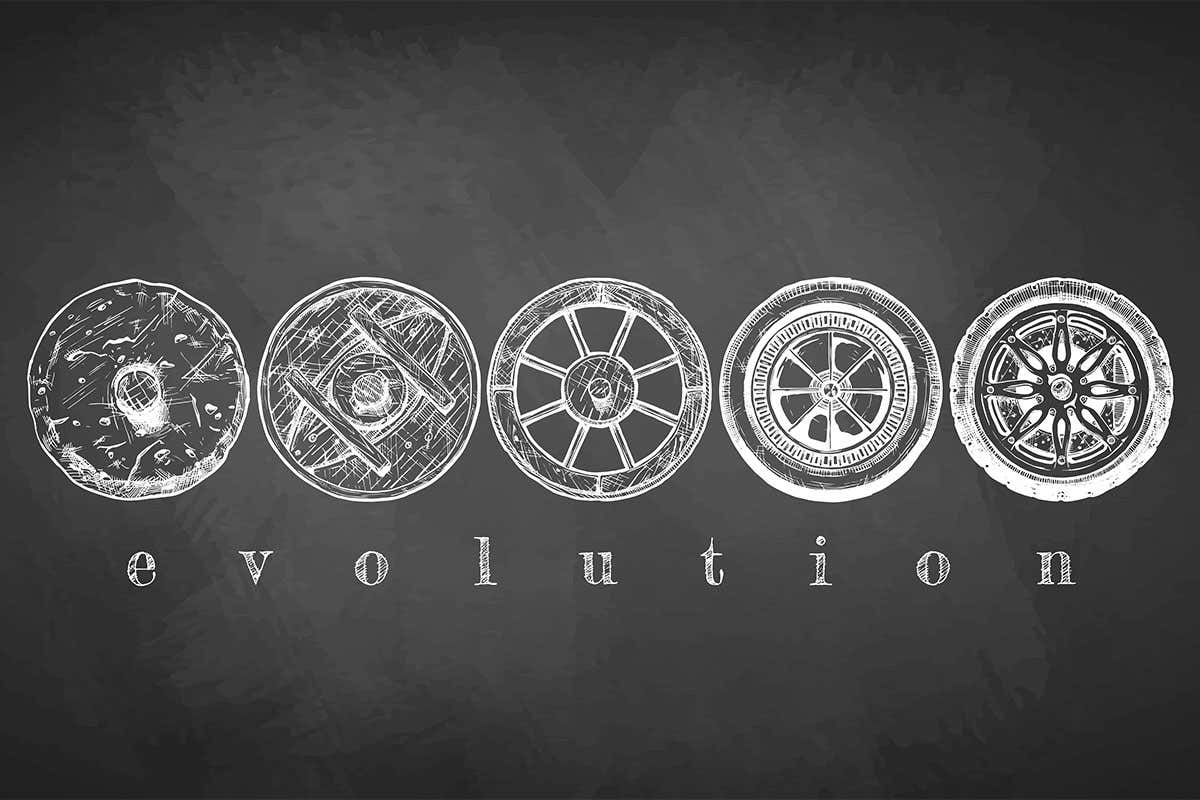
Babich Alexander/Shutterstock
Uruk, 5,500 years ago. The Sumerian city is a splendid sight, the largest and richest human settlement the world has ever seen. And it is distinctively urban, with tens of thousands of inhabitants, big buildings, city walls, markets and outlying residential districts.
That much we know from the city’s ruins. But one of the essential trappings of a modern city is conspicuous by its absence: the wheel.
It is hard to imagine a functioning modern city without cars, taxis, buses, trucks, bikes and tuk-tuks to ferry goods and people about. But Uruk doesn’t seem to be a city on wheels. The only evidence we have that it was are a handful of etchings that vaguely resemble four-wheeled wagons, inscribed on poorly dated clay tablets. In contrast, there are many pictographs of contraptions that look like sledges, suggesting that Uruk was a city driven by vehicles designed to be dragged along the ground.
Advertisement
If wheels really were rare or even absent in Sumeria, then that would be a bit of a head-scratcher. The technology seems so blindingly obvious, so easy to make, so obviously useful and so ripe for invention. Potter’s wheels were an ancient technology by this time. The city had streets that were flat and smooth enough to drag a sledge along and would have been ideal for wheels. Asses, oxen and other beasts of burden that could pull wagons had been domesticated, and complex trade networks had sprung up across the region. Metal-working was becoming commonplace. It wasn’t the Stone Age, for heaven’s sake!
Perhaps we simply haven’t found the remains of Uruk’s carts and wagons yet. Early vehicles were probably made of wood and rope, which do not preserve well in the archaeological record. Nonetheless, Sumeria’s earliest unambiguous depictions of wheeled vehicles date from a thousand years later, on a decorated wooden box depicting four-wheeled chariots drawn by asses. The obvious conclusion is that whatever was making Uruk’s world go round, it wasn’t wheels.
Even more oddly, at the time the sophisticated Sumerians were apparently struggling to invent the bleeding obvious, people in relative backwaters were travelling. Under a 5,500-year-old tomb in Flintbek, Germany, archaeologists found a pair of parallel, wavy ruts that must be the tracks of a wonky-wheeled cart. The same culture – the funnel beaker people – made pots decorated with motifs that look very much like four-wheeled wagons.
The earliest physical remains of an actual wheel also come from backwards Europe. Discovered in a bog in what is now Slovenia in 2002, the Ljubljana Marshes wheel is a wooden wheel/axle combination dated to about 5,150 years ago. What it was attached to is not known; possibly a hand cart. Further east, on the steppes of what is now Ukraine, wheels and complete carts have been found in 5,000-year-old graves.
The wheel revolution
We don’t know whether Europe’s ancient wagon technology was wheeled in from elsewhere or invented independently. But there is another line of evidence that the wheel was established in Europe very early on. Languages, like bones and DNA, contain traces of the distant past. In the same way that biologists can reconstruct the common ancestor of two species by looking at the genes and physical traits that they share, so linguists reconstruct extinct languages. The word “name”, for instance, derives from the Latin “nomen”, which also gives us the French “nom” and the Spanish “nombre”.
Creating a family tree of modern European languages shows that most of them, and some non-European languages, share a common origin: a now extinct language dubbed Proto-Indo-European. It probably arose somewhere in western Asia and was brought to Europe by an incoming population.
The original vocabulary reconstructed by linguists contains five words relating to the wheel. Two literally mean “wheel”, one means “axle”, one refers to a pole used to yoke animals to a cart and one is a verb for the action of transporting in a vehicle. Talking about the wheel so much implies it was an important part of the lives of its speakers.
Proto-Indo-European has been dated to about 5,500 years ago, suggesting that the wheel was already an old technology when the Ljubljana wheel was made. What is more, one group of the speakers of the language were the Yamnaya, the people who built the wagon graves in Ukraine.
Genetic evidence suggests that around 4,500 years ago the Yamnaya expanded west into central Europe and went on to found some of the continent’s dominant late Neolithic and Copper Age cultures, including the vast Corded Ware culture – named after its distinctive pottery – that stretched from the North Sea to central Russia.
The Yamnaya were cattle herders. Up until about 5,500 years ago, their settlements clung to the river valleys of their homeland – the only place where they had easy access to the water they and their livestock needed. But their arrival in Europe is consistent with the idea that they had mastered wagon technology. With wagons they could take water and food wherever they wanted, and the archaeological record shows they began to occupy vast territories.
The wheel quickly spread. By about 4,500 years ago light and nippy two-wheeled chariots made their first appearance and were soon being used in warfare. The wheel also inspired more peaceful inventions such as water wheels, cogs and spinning wheels. It took a while, but once wheels were invented, technological civilisation was on a roll.






